Bulletproof vests are essential protective gear designed to shield individuals from potential harm in dangerous situations. Whether for law enforcement, military personnel, or civilians in high-risk occupations, knowing how to wear a bulletproof vest properly is of utmost importance.
This comprehensive guide will walk you through the steps of wearing a bulletproof vest correctly in order to maximize its effectiveness and ensure your safety.
It is crucial to understand the significance of proper usage of bulletproof vests. Ill-fitting or incorrectly worn vests can compromise their protective capabilities and put the wearer at risk.
By following the correct steps to wear a bulletproof vest, you can ensure that it provides optimal protection when you need it the most.
The steps to wear a bulletproof vest properly include selecting the correct size and type of vest, ensuring a proper fit, putting it on correctly, adjusting the straps and fastenings, and checking for comfortable range of motion.
Each step is crucial to achieve a secure and comfortable fit that allows for both mobility and protection.
There are additional tips to consider, such as inspecting the vest regularly for damage, properly storing and maintaining it, and seeking professional advice and training.
Lastly, it is essential to be aware of common mistakes to avoid when wearing a bulletproof vest. These mistakes include wearing the wrong size or type of vest, improperly adjusting the straps and fastenings, and ignoring comfort and range of motion.
By being mindful of these errors, you can ensure that the vest is effectively worn, reducing the risk of injury.
Stay tuned for the next sections for detailed instructions and tips on wearing a bulletproof vest properly and learn how to make the most of this essential piece of protective gear.
Why is Proper Usage of Bulletproof Vests Important?
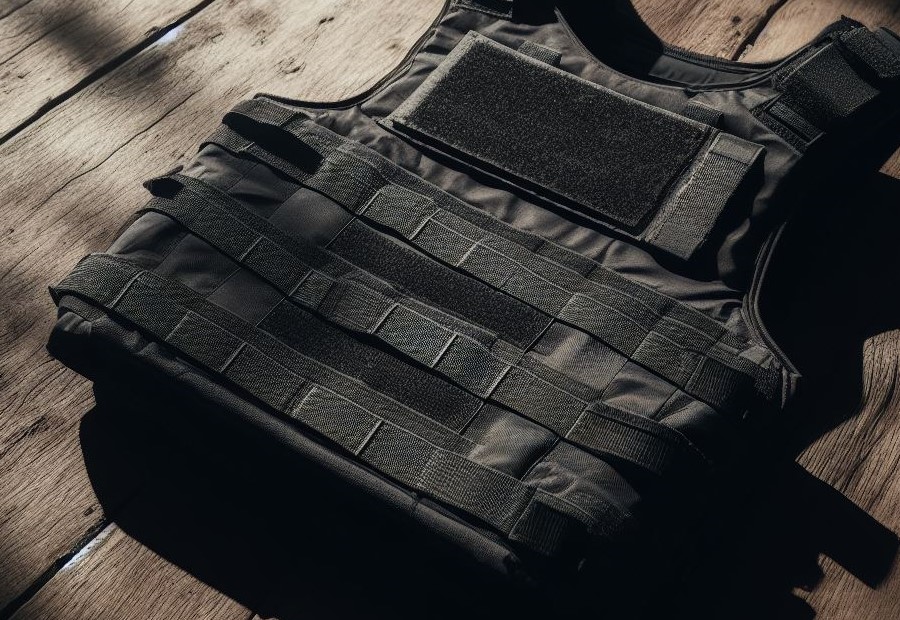
Proper usage of bulletproof vests is crucial for personal safety and protection. It is important to wear a bulletproof vest correctly to ensure maximum effectiveness in stopping projectiles and reducing the risk of injury.
Incorporating bulletproof vests in high-risk situations, such as law enforcement operations or combat situations, is essential to enhance personal security.
In addition, proper usage of bulletproof vests helps to maintain proficiency and readiness for potential threats. Regular training and familiarization with the equipment cultivate confidence and enable individuals to respond effectively in dangerous situations.
Bulletproof vests significantly boost the overall safety and well-being of individuals operating in hazardous environments. They provide a layer of defense against firearms and other potential threats, increasing the chances of survival for those wearing them.
Moreover, the importance of proper maintenance and inspection of bulletproof vests cannot be overstated. Regularly checking for wear and tear, replacing damaged parts, and ensuring a proper fit are essential to guarantee optimal performance.
Failure to do so may compromise the effectiveness of the vest and put the wearer at greater risk.
Steps to Wear a Bulletproof Vest Properly
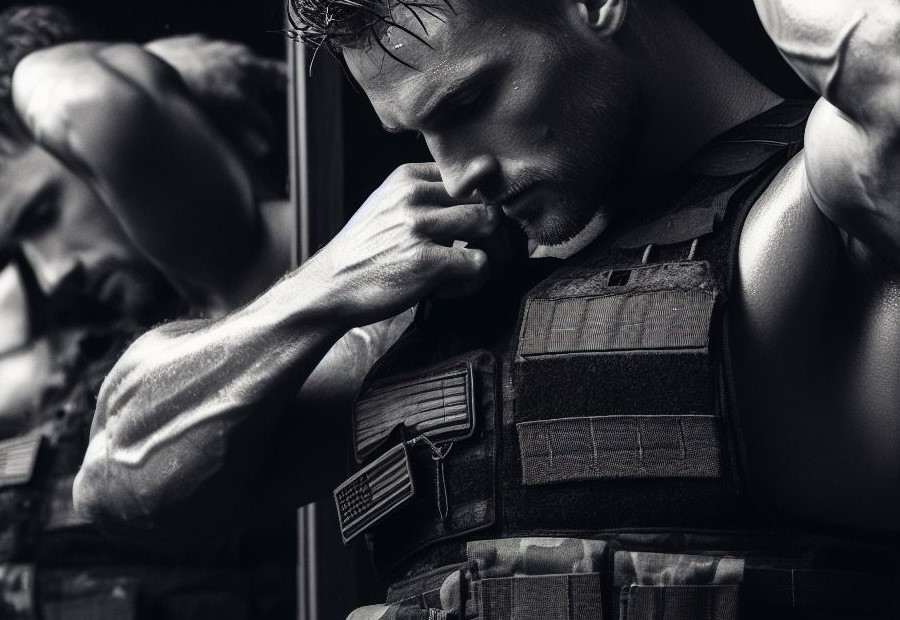
Wearing a bulletproof vest properly can make all the difference in protecting yourself. In this section, we’ll go through the necessary steps to ensure you’re wearing your vest correctly.
From choosing the right size and type of vest to adjusting the straps and fastenings for a proper fit, we’ll cover it all. Plus, we’ll explore how to check range of motion and ensure maximum comfort without compromising safety.
Stay tuned to learn the essential steps for wearing a bulletproof vest effectively.
Choosing the Correct Size and Type of Vest
To start, it is important to choose the correct size of the bulletproof vest for your body. This can be accomplished by accurately measuring your chest, waist, and torso length. In order to make the right selection, refer to the sizing chart provided by the manufacturer.
Furthermore, consider the type of vest that best suits your needs. There are a variety of options available, including concealable vests for everyday use or tactical vests for increased protection and the ability to carry additional equipment.
Evaluate your intended usage and make your selection accordingly.
Additionally, take into account the level of protection required. Bulletproof vests are classified based on their ability to stop bullets of different calibers and velocities. Assess the potential threats you may face and opt for a vest that meets or surpasses those requirements.
Moreover, consider the material and weight of the vest. Different materials provide varying levels of comfort, durability, and mobility. Lightweight materials like Kevlar or Dyneema are often favored for their flexibility and reduced weight, without compromising on protection.
Lastly, look for any additional features that may enhance your comfort or functionality. These features could include adjustable straps, ventilation systems, and quick-release mechanisms. Evaluate if these attributes align with your specific needs and preferences.
Ensure Proper Fit and Size
To ensure a proper fit and size when wearing a bulletproof vest, follow these steps:
- Start by selecting the correct size and type of vest. Different vests are designed for different body types and levels of protection.
- Prior to putting on the vest, make sure it is adjusted to fit your body properly. It is crucial to ensure a proper fit and size to guarantee optimal protection and comfort. The vest should be snug but not too tight, allowing for comfortable movement.
- Put on the vest correctly, ensuring that the front and back panels are aligned properly over your chest and back.
- Adjust the straps and fastenings according to your body shape and size. The vest should be secure and not shift around during movement.
- Finally, check the range of motion and comfort. Move your arms, torso, and shoulders to ensure that the vest allows for unrestricted movement and does not cause discomfort.
These steps are crucial in ensuring that the bulletproof vest provides optimal protection and comfort. Wearing a vest that is too loose or too tight can jeopardize its effectiveness.
It is important to properly adjust the vest to ensure it fits snugly and securely on your body. Remember to always follow the manufacturer’s instructions and seek professional advice if needed to ensure proper fit and size of your bulletproof vest.
Put on the Vest Correctly
To put on a bulletproof vest correctly, follow these steps:
- Hold the vest with both hands, ensuring that the front panel is facing you.
- Slip your arms through the arm holes, one at a time, making sure the vest hangs evenly on your shoulders.
- Put on the vest correctly by bringing the front panel across your chest and securing it with fastenings like zippers or Velcro.
- Adjust the straps on the sides of the vest to achieve a snug fit. Make sure the vest is not too loose or too tight.
- Check that the vest allows for a full range of motion and provides comfort while wearing it.
It’s crucial to put on the vest correctly to ensure maximum protection and effectiveness.
Adjust the Straps and Fastenings
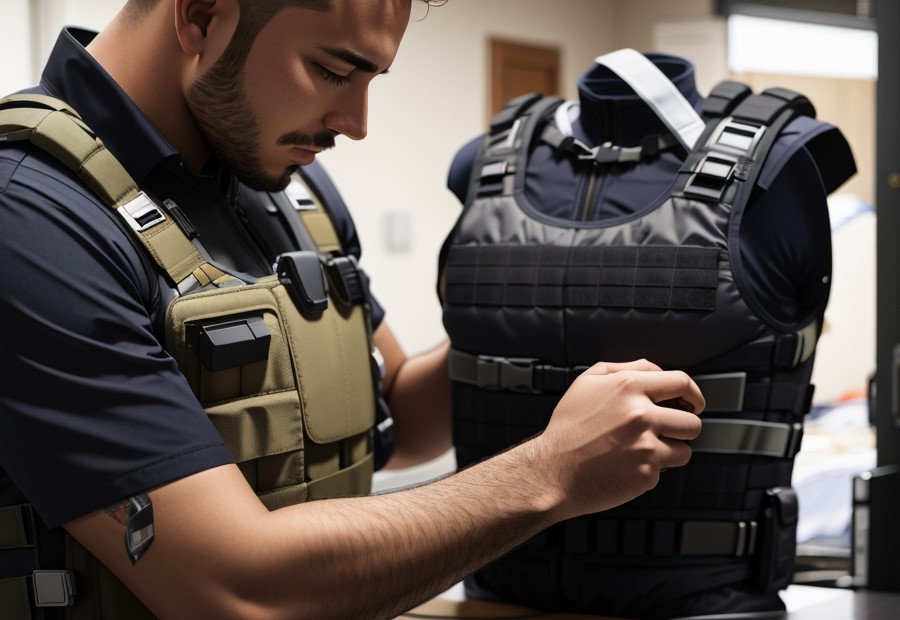
Adjusting the straps and fastenings of a bulletproof vest is an essential step in ensuring its proper fit and functionality.
Here are the steps to adjust the straps and fastenings:
- Start by locating the durable straps made of materials such as nylon or Velcro on the sides of the vest.
- To create enough room for the vest to fit comfortably around your body, loosen the straps.
- Put on the vest, ensuring the centered front panel is over your chest and the back panel is centered over your spine.
- Gradually tighten the straps on each side, starting from the bottom and working your way up, to ensure a snug fit against your body without being too tight or restrictive.
- Once tightened, secure the straps properly aligned and not twisted.
By adjusting the straps and fastenings correctly, you can customize the fit of your bulletproof vest to your body shape and size. This increases its effectiveness in providing protection and ensures comfort during prolonged wear.
The use of bulletproof vests dates back to the early 1900s when the U.S. Military began experimenting with various materials to protect soldiers in combat. In 1893, a Polish-American inventor named Casimir Zeglen invented the first practical bulletproof vest.
His design incorporated layers of silk fabric, demonstrating the ability to stop bullets.
Over the years, advancements in technology and materials have led to the development of more effective and lightweight bulletproof vests widely used by law enforcement agencies and military personnel today.
The evolution of bulletproof vests continues with ongoing research and innovation focused on improving their protective capabilities and comfort for those who rely on them in dangerous situations.
Check Range of Motion and Comfort
1. Move your arms and shoulders to ensure a full range of motion. The vest should not hinder your ability to raise your arms, reach forward, or move comfortably.
2. Bend and twist your torso to ensure that the vest does not restrict your movement. It should allow you to bend at the waist and twist your upper body without any discomfort or limitations.
3. Walk and move around to check that the vest does not impede your mobility. It should not restrict your walking stride or make it difficult to perform regular movements.
4. Do a quick test by crouching and kneeling. The vest should not restrict your ability to bend your knees and squat down comfortably.
5. Check for any pressure points or areas of discomfort. Adjust the straps and fastenings if needed to alleviate any discomfort or pressure on your body.
Remember, a properly fitting vest that allows for a full range of motion and provides comfort is essential for your safety and effectiveness in wearing a bulletproof vest.
Additional Tips for Wearing a Bulletproof Vest
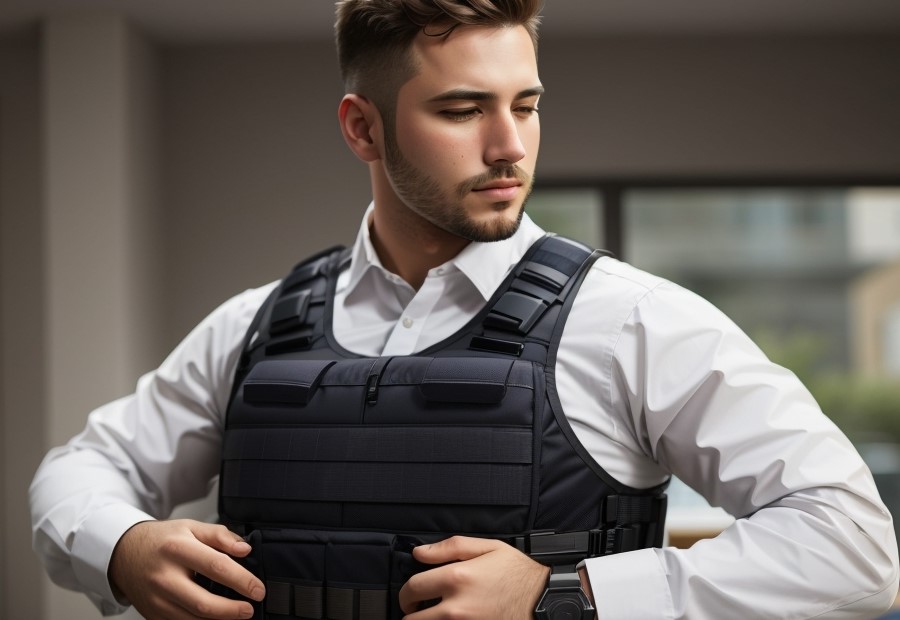
Enhance your bulletproof vest-wearing skills with these additional tips! From regular inspections to proper storage and seeking professional advice, this section has got you covered.
Learn how to spot damage, maintain your vest, and ensure you’re properly trained for maximum effectiveness.
It’s time to take your self-defense game to the next level and stay protected with confidence.
No more guesswork – let’s dive into these invaluable tips and elevate your bulletproof vest game!
Inspect the Vest Regularly for Damage
Inspecting the bulletproof vest regularly for damage is crucial to ensure its effectiveness and your safety.
It is recommended to inspect the vest before each use, especially in high-risk situations. By regularly inspecting the vest for damage, you can ensure that it provides the necessary protection when it matters the most.
Properly Store and Maintain the Vest
Properly storing and maintaining your bulletproof vest is crucial to ensure its effectiveness and longevity. Here are some steps to follow:
- Inspect and clean regularly: Regularly inspect the vest for any signs of damage or wear. Look for tears, fraying, or loose threads. Clean the vest according to the manufacturer’s instructions, as improper cleaning can damage the protective materials.
- Properly Store and Maintain the Vest When not in use, store your vest in a cool and dry environment. Avoid extreme temperatures and exposure to direct sunlight, as they can degrade the protective materials. Hanging the vest or using a ventilation bag can help maintain its shape and prevent moisture buildup.
- Avoid folding or crushing: Do not fold or crush the vest to avoid damaging the ballistic panels. If possible, store it flat or hang it to maintain its integrity.
- Keep away from chemicals: Avoid exposing the vest to harsh chemicals or solvents, as they can deteriorate the protective layers. Keep it away from gasoline, oils, and cleaning agents that may cause damage.
- Check for expiration dates: Some protective materials used in bulletproof vests have expiration dates. Make sure to check the manufacturer’s recommendations and replace the vest if it has expired.
By following these steps, you can ensure that your bulletproof vest remains in optimal condition and provides the necessary protection when you need it.
Seek Professional Advice and Training
When it comes to wearing a bulletproof vest properly, it is essential to seek professional advice and training to ensure maximum safety and effectiveness. Here are some steps to consider:
- Research reputable sources: Look for certified training programs or professionals who specialize in bulletproof vest usage.
- Attend training sessions: Participate in hands-on training sessions to learn the correct techniques for wearing and adjusting the vest.
- Seek professional advice: Learn about different vest models and get advice from professionals to determine which type is suitable for your specific needs and body type.
- Understand maintenance requirements: Professionals can guide you on proper maintenance practices to keep the vest in optimal condition.
- Practice regularly: Continuously practice wearing the vest, adjusting straps, and performing movements to build familiarity and ensure correct usage.
Seeking professional advice and training is crucial because it provides the knowledge and skills necessary to handle the complexities of wearing a bulletproof vest. By following these steps and expert guidance, you can ensure that you are properly protected in potentially dangerous situations.
Common Mistakes to Avoid
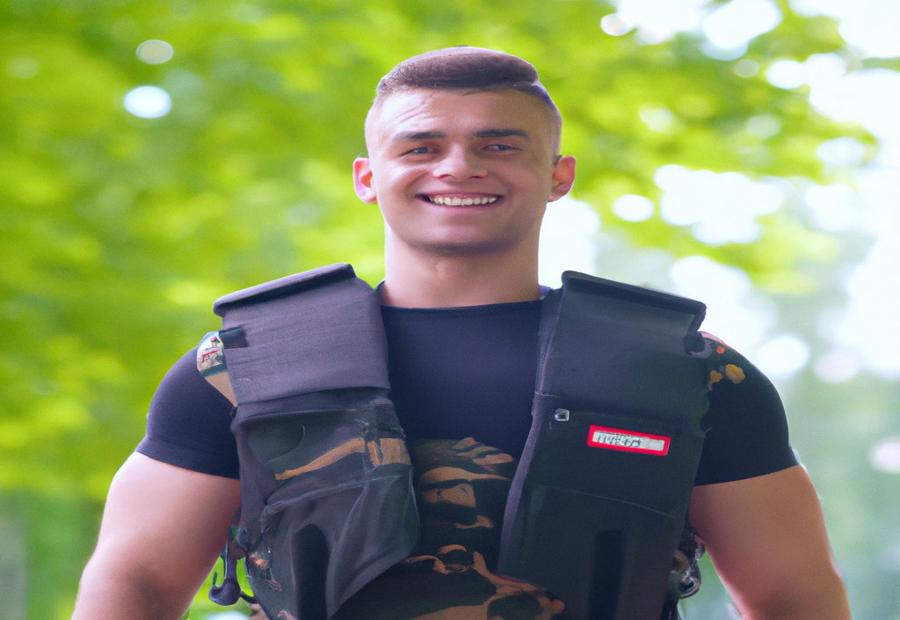
Photo Credits: Paintballbuzz.Com by Christopher King
Avoiding these common mistakes when it comes to wearing a bulletproof vest is essential for ensuring your safety.
From wearing the wrong size or type of vest to improperly adjusting straps and fastenings, these mistakes can compromise the effectiveness of your vest. In this section, we’ll delve into the crucial details of each sub-section.
We’ll explore the importance of choosing the right size and type of vest, proper adjustment techniques for straps and fastenings, and the significance of finding a balance between comfort and range of motion.
Let’s dive in and learn how to wear a bulletproof vest properly.
Wearing the Wrong Size or Type of Vest
When wearing a bulletproof vest, one of the most common mistakes is choosing the wrong size or type of vest. It is crucial to select the correct size and type to ensure both protection and comfort. There are several reasons why wearing an ill-fitting vest is a mistake:
- Inadequate Coverage: If the vest is too small, it may fail to cover essential body areas, leaving them vulnerable to injury. Conversely, if the vest is too large, it may not fit properly, compromising its effectiveness.
- Restricted Mobility: Wearing a tight vest can limit movement, making it challenging to perform essential tasks. Conversely, a loose vest can shift during movement, affecting both stability and mobility.
- Reduced Protection: Different vests are designed to protect against specific threats. Wearing a vest not intended for a particular threat increases the wearer’s risk.
To avoid this mistake, it is crucial to carefully consider the size and type of vest that suits your body and intended use. Consult with professionals or field experts to ensure the right choice. Remember, a properly fitted and suitable vest is vital for maximum safety and effectiveness.
Pro-tip: Always ensure that your chosen bulletproof vest fits snugly but allows comfortable movement. Regularly inspect your vest to maintain optimal protection by verifying the correct size and good condition.
Improperly Adjusting Straps and Fastenings
When it comes to wearing a bulletproof vest, one common mistake is not properly adjusting the straps and fastenings.
This error can have serious consequences, as it significantly reduces the effectiveness of the vest and puts the wearer at risk. To avoid this mistake, it is important to follow these steps:
Step 1: Begin by loosening all straps and fastenings on the vest.
Step 2: Put on the vest and ensure that it is properly centered on your body.
Step 3: Start by adjusting the shoulder straps. They should be tightened enough to provide a snug fit but should not restrict movement.
Step 4: Next, adjust the side straps. They should be tightened evenly on both sides to ensure a secure fit.
Step 5: Lastly, adjust the waist straps. They should be tightened enough to keep the vest in place without causing any discomfort.
It is crucial to remember that the straps and fastenings should not be too tight, as this can limit movement and hinder the effectiveness of the vest. Additionally, make sure to avoid leaving any loose straps that may potentially get caught on objects. Regularly check and readjust the straps and fastenings as needed to ensure a proper and secure fit.
By following these steps and correctly adjusting the straps and fastenings of your bulletproof vest, you can ensure optimal protection and comfort.
Ignoring Comfort and Range of Motion
Ignoring comfort and range of motion when wearing a bulletproof vest can compromise its effectiveness and hinder your ability to move freely.
It is important to ensure that the bulletproof vest fits properly and is not too tight or loose, as well as adjusting the straps and fastenings to ensure a secure and comfortable fit.
Checking the range of motion while wearing the vest is also essential to ensure it does not restrict movement.
Prioritizing comfort is crucial to avoid any discomfort or distraction during use. Remember to choose a vest that fits well and allows for effortless movement, as comfort should not be overlooked as it can significantly impact your performance and agility in critical situations.
Additionally, considering the range of motion is crucial to ensure that you can easily perform tasks and respond effectively. Keep in mind that a bulletproof vest is designed to protect you, but it should not restrict your comfort or hinder your ability to move.
Frequently Asked Questions
How should I properly wear a bulletproof vest?
To properly wear a bulletproof vest, it should be adjusted to cover vital organs like the heart and lungs.
It is recommended to wear the vest high, approximately one inch below the clavicle notch, even though it may be uncomfortable, as the ballistic protection is more important than comfort.
What factors should I consider for proper fit when selecting a bulletproof vest?
When selecting a bulletproof vest, factors such as size, weight distribution, and fit considerations should be taken into account.
It is important to find the correct size using size charts provided and ensure that the vest aligns with the natural curve of the body for a natural fit.
What are the different cuts of armor and their benefits?
Different cuts of armor, such as full cut, shooter’s cut, swimmers cut, and SAPI, offer different levels of mobility and protection. The choice of cut depends on the intended use and personal preference of the wearer.
Can body armor be worn both on and off duty?
Yes, body armor can be worn both on and off duty. Wearing body armor off duty helps with adjustment and increases officer safety.
There are also gender-specific options available to cater to individual needs.
Are there specific guidelines for the correct direction of hard armored plates?
Yes, there are specific guidelines for the direction of hard armored plates. While some plates can be faced toward or away from the wearer’s body, some models, like ShotStop® plates, require the strike face to face outward for maximum protection.
It is important to follow the manufacturer’s instructions for proper plate direction.
How important is proper wear of body armor for protection?
Wearing body armor correctly significantly increases the chances of survival in the event of being shot. Proper wear ensures that vital organs are covered, and the ballistic protection is maximized for effective defense against handgun ammunition, .44 magnum, and even rifle fire.

